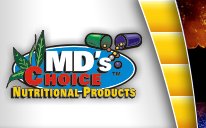| Vitamins & Minerals |
Vitamins
Major Elements
Trace Elements
Toxic Elements
I. Uniqueness of Elements
- Each element has a unique chemical structure that is responsible for its total role in animal nutrition.
- Differences are sufficient to make each element a separate story requiring individual consideration
- Similarities may exist between two or more elements
- Function
- Metabolism
- Supply
- Practical importance
- Similarities in structure may result in interactions among elements. Se Hill, C.H. and G. Matrone. 1970 Chemical parameters in the study of in vivo and in vitro interactions of transition elements. Fe. Proc. 29:1474-1481.
II. Classification of Elements
- Dietary requirements or tissue concentration
- Major elements > > 100 ppm dietary requirement and tissue concentration
- Trace elements < 100 ppm
- Anions or cations
- Anions – P, S, Cl, I, F, Se
- Cations – Ca, Mg, Na, K, Fe, Zn, Mn, Cu, Co, Ni, Sn
- Valance No.
- Group position on periodic chart of elements
- Toxic or Nontoxic
III. Nomenclature: Minerals or Elements?
- Not all elements are minerals
- Not all minerals are single elements
IV. Comparisons Among Elements
- 300,000 X more Ca than Co in body yet both are equally essential
- 240 X more Ca than Fe in the body, yet 1.5 more Fe than Ca in earth's crust. (Fe is a trace element because of dietary requirement rather than abundance.)
- Even within the same classification, differences are great
- 30 X more Ca than Mg in the body
- 70 X more Zn than Mn in the body
- Comparisons
- 98% of body's Ca is in skeleton and teeth
- Most of I is concentrated in the thyroid gland
- Zn is widely distributed throughout the body.
V. Metabolism
- Absorption and Excretion
- Percentage of intake
- Mechanisms
- Simple diffusion
- Facilitated diffusion
- Active transport
- Gastrointestinal sites of absorption
- Interactions with other dietary components
- With other inorganic elements
- Cu and Mo
- Cd and Zn
- With organic compounds
- Zn and phytate
- With other inorganic elements
- Homeostatic controls
Homeostasis: Maintenance of physiological equilibrium
Homeorhesis: Changes in metabolism to support a new physiological state- Absorption changes (Fe, Zn, Ca)
- Urinary excretion (Na, Cl, K)
- Tissue content changes (Cu)
- Variable endogenous fecal excretion
- Secretion in milk (I)
- Tissue concentrations and distributions
- > 98% of Ca in skeleton and teeth
- Most of I in the thyroid gland
- Zn is widely distributed throughout the body
VI. Functions of inorganic elements
- Structure – Ca, P, Mg, Mn, Cu, Si, Na
- Energy transfer – P
- Protein synthesis – S is part of certain amino acids: P, Fe, Mn, Ni, Zn and Cr are components of RNA
- Parts of enzyme systems
- Some of the major elements – Ca and Mg
- Most of the essential trace elements
- Metallo enzymes – metal firmly associated with protein
- Metal-enzyme complexes – looser association
- Several enzyme systems may work in concert: Cu, Zn-superoxide dismutase, Mn-superoxide dismutase, Se in glutathione peroxidase and Fe in catalyses are involved in protection against lipid peroxidation of cell membranes.
- Electrolytes
- Osmotic pressure
- Acid-base balance, pH
- Membrane permeability – Ca, P, Mg, Na, K, Cl
- Neuromuscular function – Ca, Mg
- Hormones – I in thyroid hormone
- Vitamin B12 – Co
- Transport of oxygen – Fe
VII. Source of inorganic elements
- Cannot be synthesized. Must come from environment.
- Feed is primary source
- Supplements
- Water
- Soil
- Nonfeed contamination
VIII. Problems – Deficiency or Excess
- Geographical
- Goiter belt – North of Mason-Dixon line and away from ocean – deficient in Iodine
- High organic soils – Florida, Alaska, United Kingdom: Excess Mo, deficient in many trace elements
- Selenium – toxic in Nebraska and South Dakota; deficient in Michigan and Ohio
- Industrial pollution – SO4, F, Pb, Cd, Hg, PCB's, PBB's
- Seasonal – grass tetany
- Metabolic – milk fever
- Trace element deficiencies often produce symptoms similar to those produced by trace element excess.
- In deficiency, there may be insufficient activities of certain enzymes needed to control biological oxidation products (examples Cu for Cu, Zn SOD; Fe for catalese)
- In excess, the amount of metal may exceed metal binding sites, leading to increased oxidation causing problems similar to deficiency (see above). (Example – transition elements catalyze the Fenton reaction which produces hydroxyl radicals)

For individual consultation or questions about our products, call
1-800-628-0997
Click Here for a Printable Version of This Page
